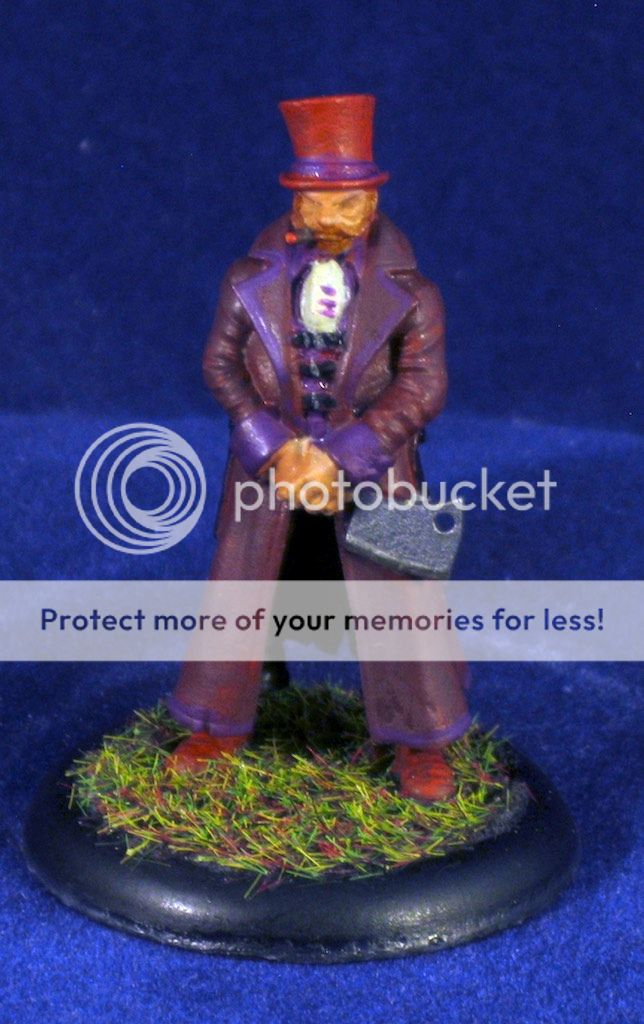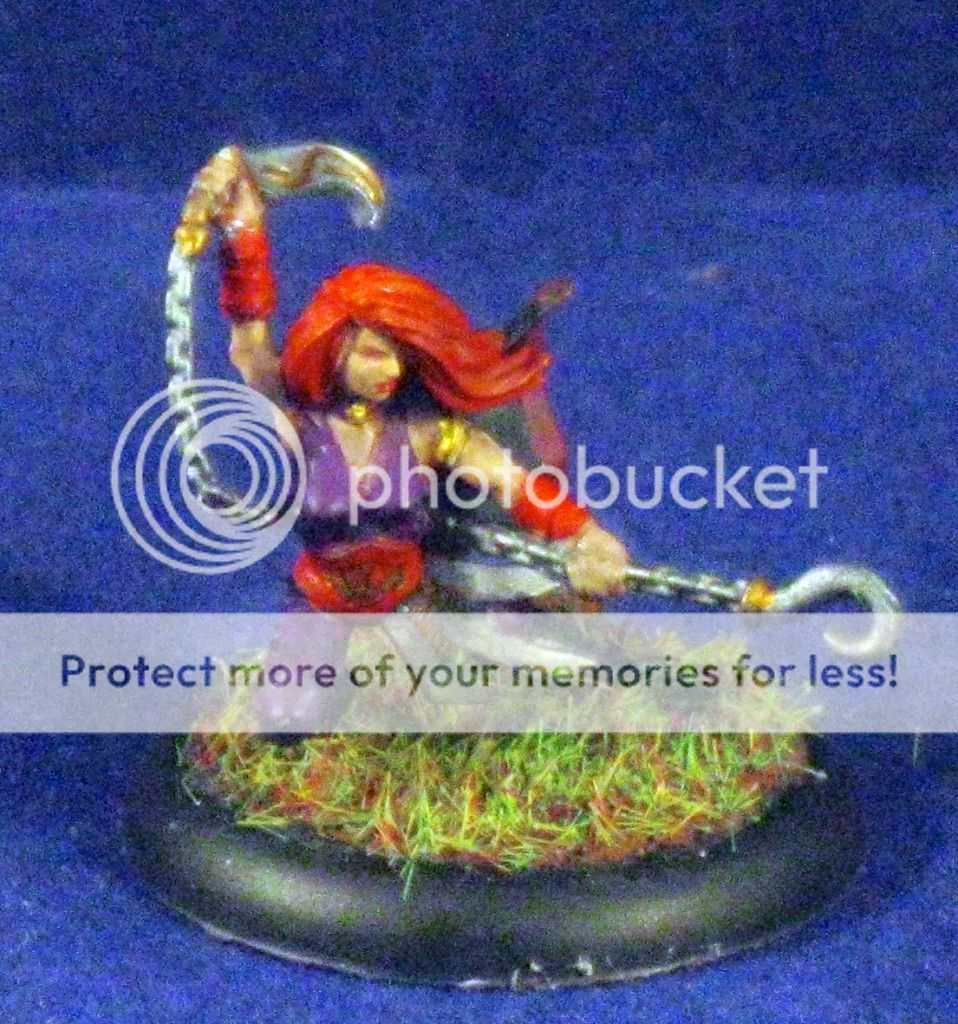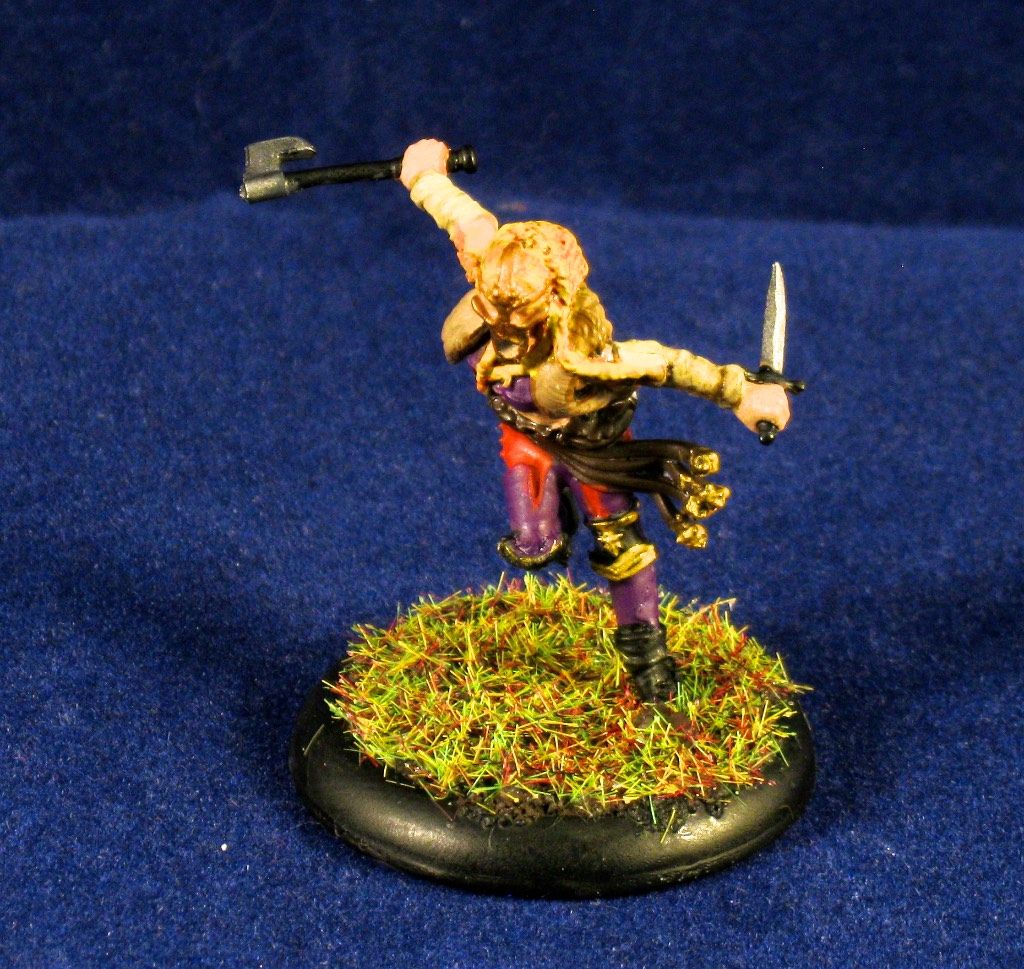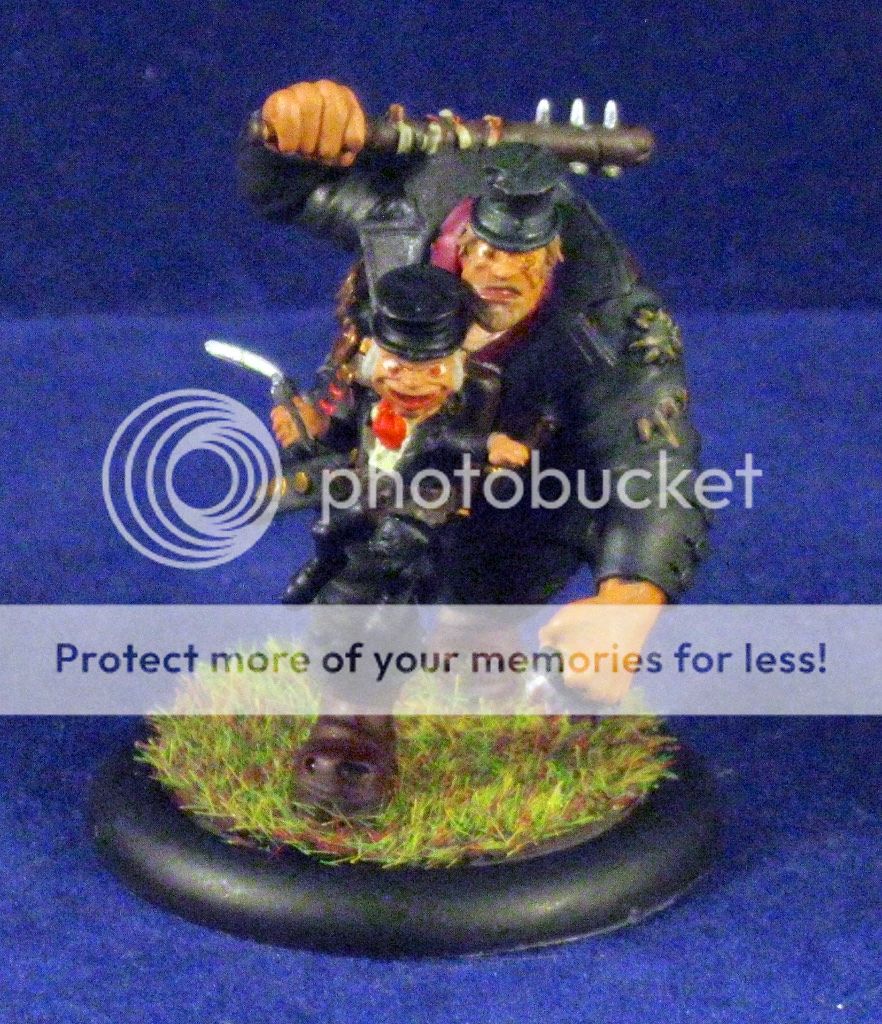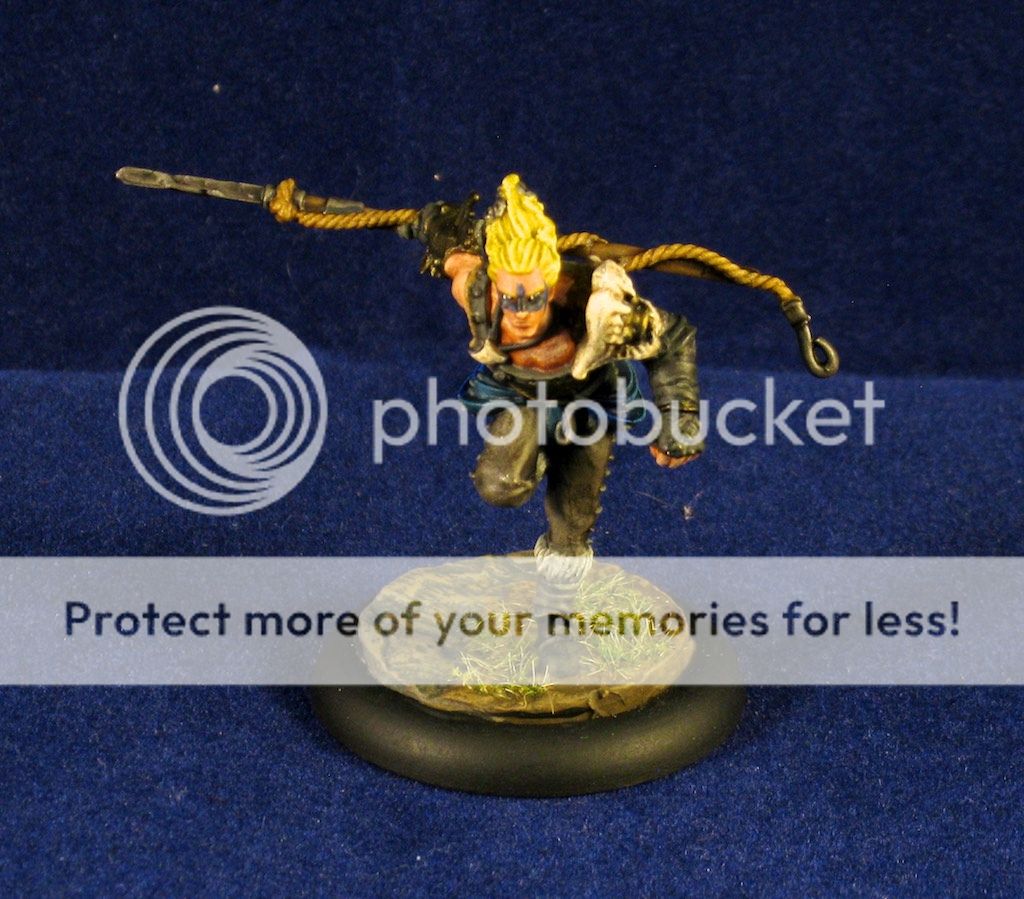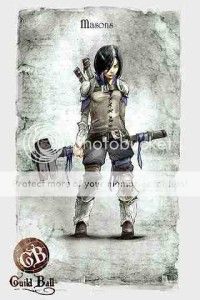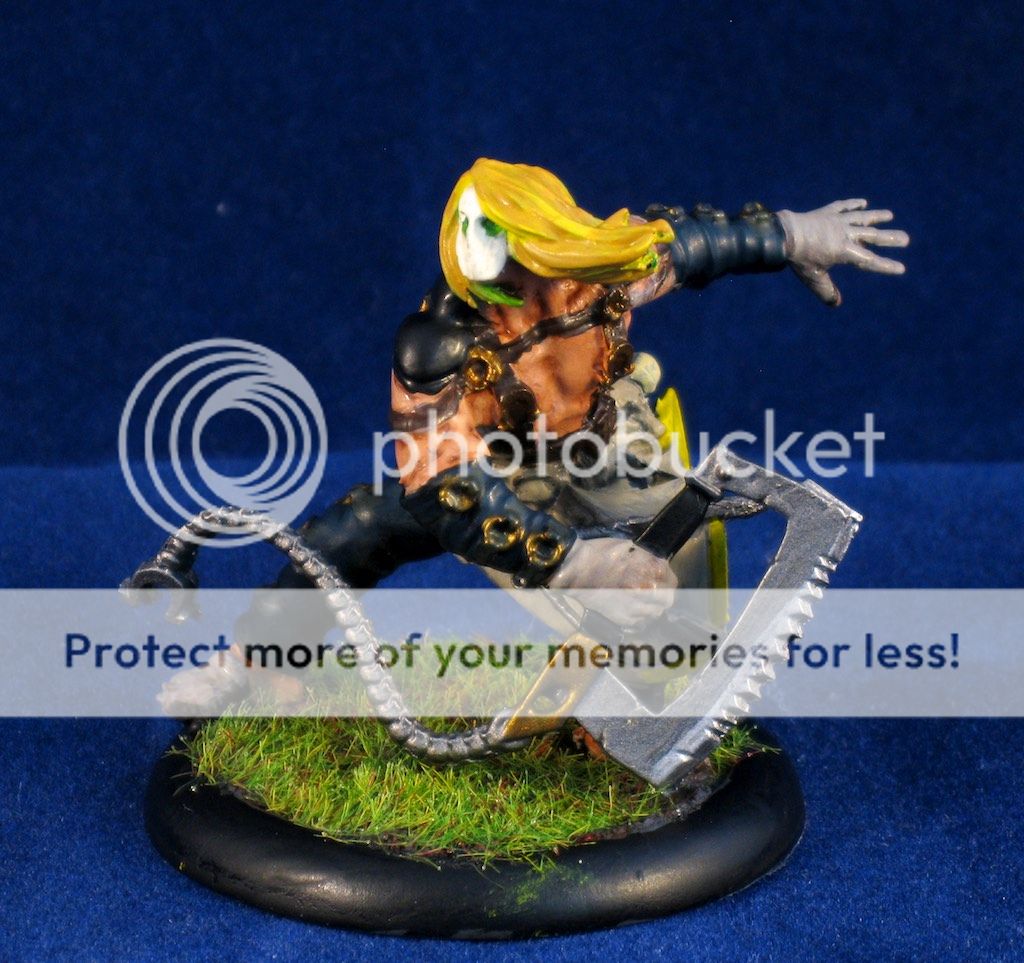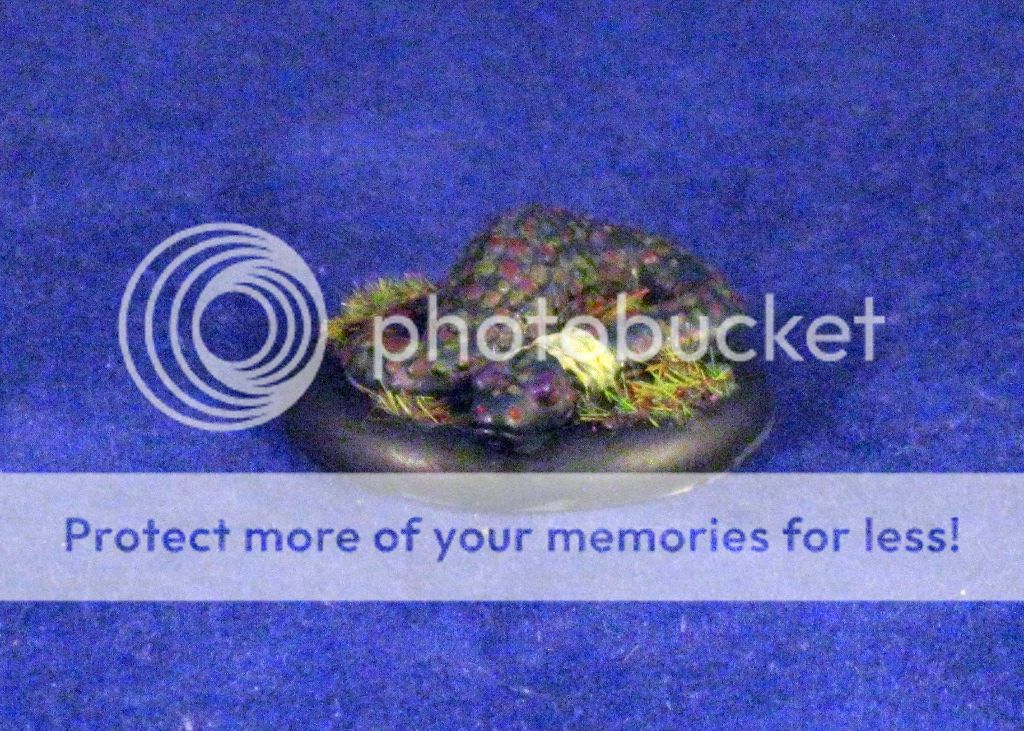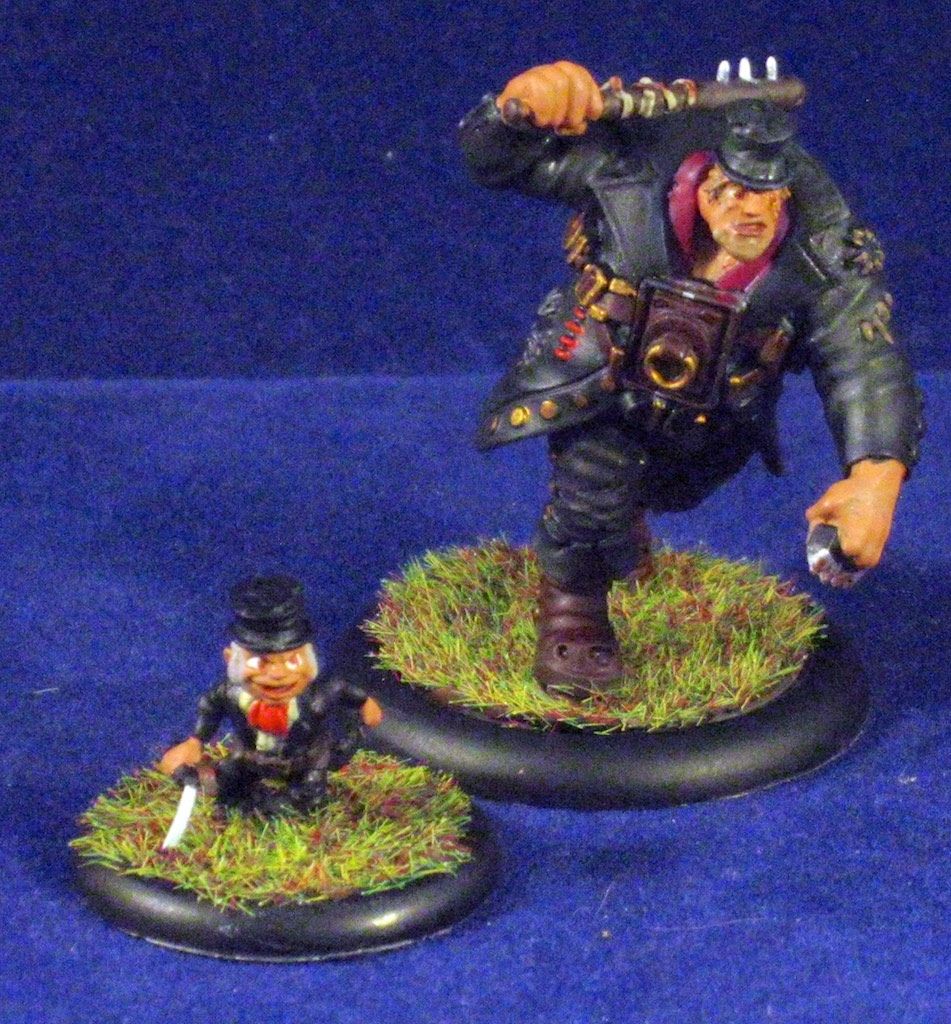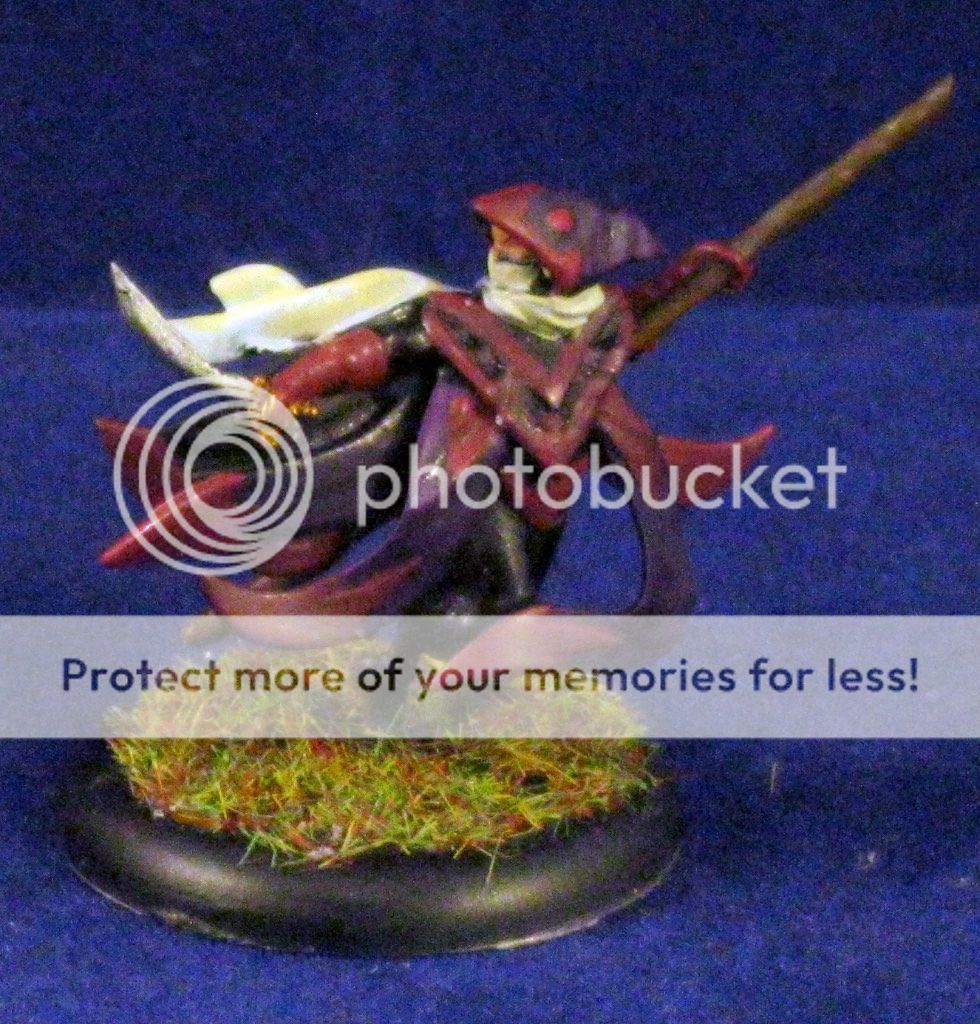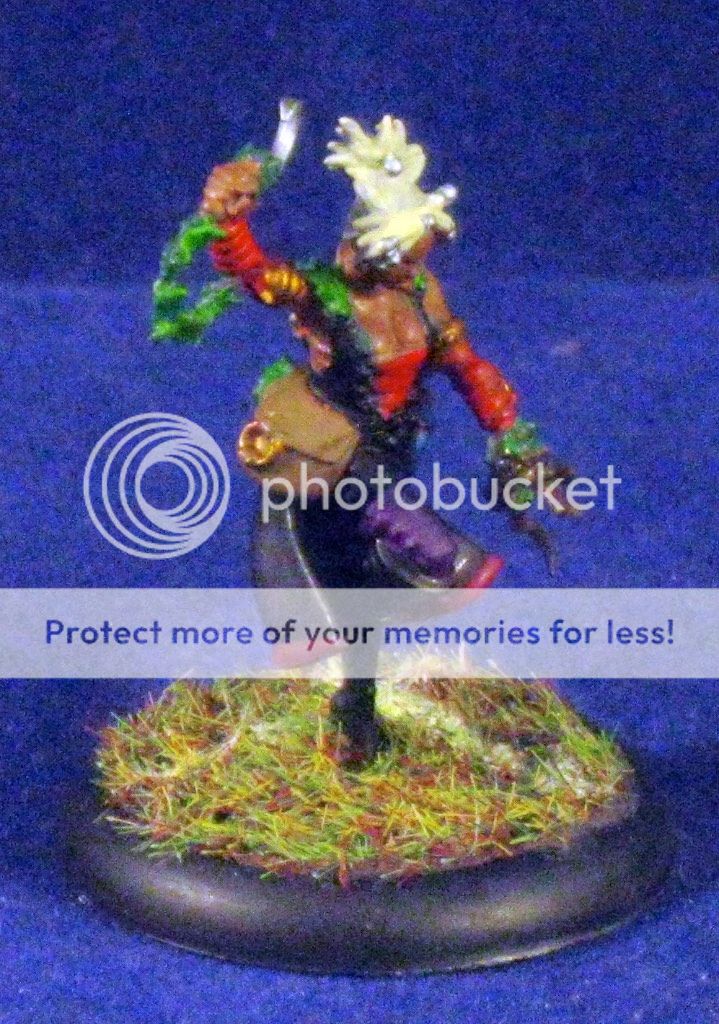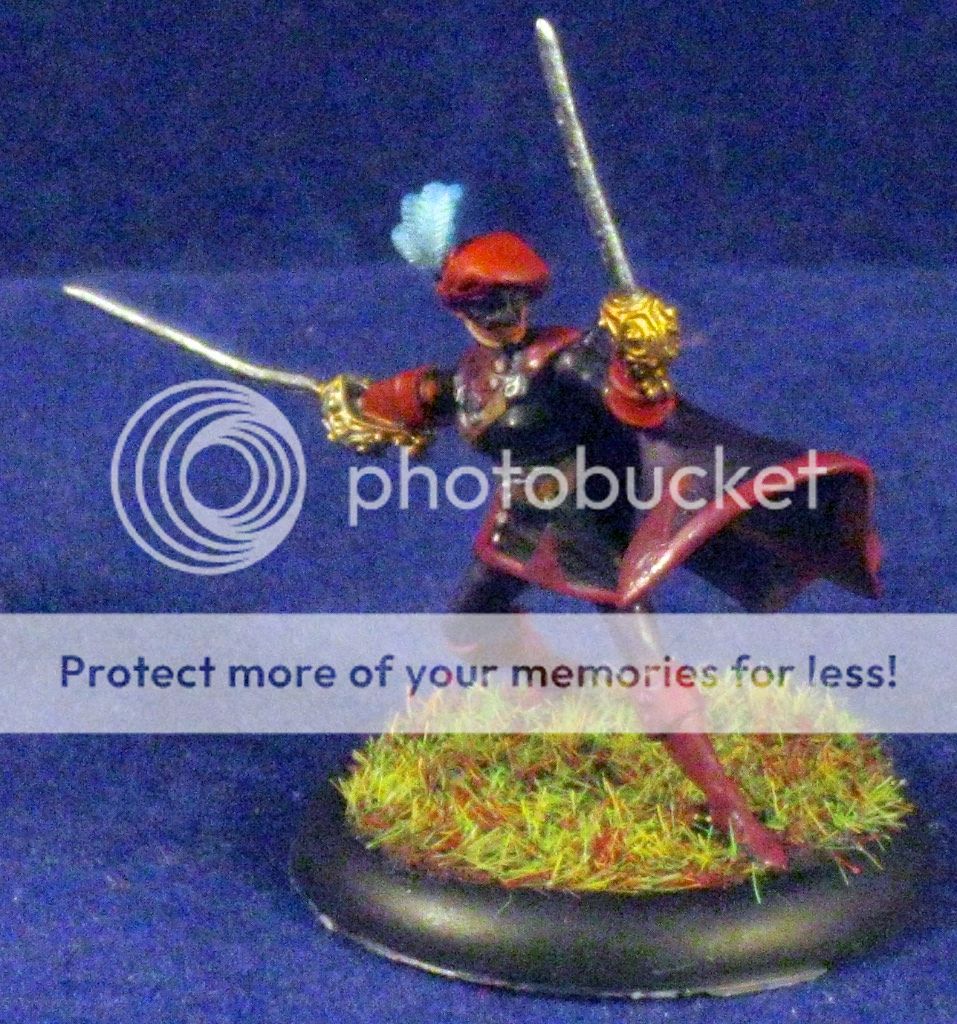On July 24th I attended a Sunday tournament, the Rumble Cup, at The Island Games in Chantilly VA. I don't prefer Sunday tournaments as my Sundays are already pretty crazy with family and church activities. I had missed out on a recent tournament and a couple Guild Ball game nights so decided to attend this one. I really wanted to get in 3 solid competitive games with an eye toward additional practice for Gencon. I knew this would be attended by my local scene and I was expecting some of the stronger players, although I also knew it would be a smaller tournament. Additionally, it was the first tournament run at The Island Games and first for the pundit, Sheridan. I wanted to support both the pundit and the store by attending.
I'll take a moment to say a little about the store, as it's a nice venue for events and general gaming. On first entering it is pretty clear the store focuses on card games (MtG, Pokemon, etc), although this should not be a surprise for anyone who frequents game stores in the US. This is only a first impression however, it only takes a look deeper into the store to see the tremendous support for board games and miniature games at near equal level to card games. The retail area of the store fills the front 1/3, with a small table in the middle of the front for some card games to be played. Large racks of board games and miniature games fill the spacious front of the store, surprisingly not feeling crowded at all for the amount of stock. Moving past the opening racks opens up a vista of 12 long tables filling the back 2/3 of the store. These tables are prefect size for board games, and can be pushed together to make space for typical miniature games. Along the back wall is a large shelf system filled with terrain for use by miniature gamers.
Overall, The Island Games is a very nice store and a great place for gamers. Anyone in the area should definitely check it out!
Matches
We had 8 people attending the event, meaning 8 rounds for the day. We started a little late but tings picked up quickly and the whole event was completed by 6:00pm. The mix in the field was both interesting and challenging, including Josh (ranked 12th in the US), Dutch (19th in the US), Dan (15th in the US), Dixon (3rd in the US), Ben (124th in the US), and 2 new players. Although these are all from my local scene, I knew I was in for a challenging day as 3 of us are practicing for the Gencon National Championship and Dan is a top player whenever he plays at a tournament.
**rankings mentioned above are per
Black Orifice Guild Ball rankings updated after the tournament.
In deference to the new players the clocks were set to 50 minute clocks with 2 minutes of clocked-out time. This was good for the new players and you'll see in the round reports that I was typically playing with a 45 minute/1 minute clock.
Round 1 - Josh's Hunters

Josh and I have played a lot of games since he's gotten into Guild Ball. Even with the return of MkIII Warmachine, Josh is still getting in 2 - 4 games of Guild Ball a week. He's coming on pretty strong in the Tournament scene, starting with Engineers, moving to Hammer led Masons (and doing really well), and now getting the Hunters on the table. His Hunters are a work in progress and he has not settled into a streamlined team yet, but he's worked out a lot of their tricks and plays a strong game.
Josh and I agreed to play on a 45 minute / 1 minute clock despite knowing the round was 50 minutes / 2 minutes. We expected we'd end the game prior to the normal round time and wanted to see how it played out. Overall this was a casual agreement as you'll see below.
He was running Theron, Fahad, Jaecar, Zarola, Seena, and Chaska facing my Capt. Rage, Coin, Gutter, Avarisse & Greede, Mist, and Hemlocke. Josh's strategy seemed to focus on grinding out the clock against me and trying to pick off players at a steady pace with Jaecar. If he could get in with Seena for a charge and Bear Hug he would but was more reliant on Seena as a threat and tar pit (21 wounds, tough hide, 2 inch reach).
We had a couple highlights and surprises during this game which are worth noting. Josh made excellent use of traps and positioning during the game to control Rage and Gutters charges, limiting what I was able to attack. Even when he grouped up I was rarely able to get into range for the flurry of scything blows I aim for with this team. During the first Turn Josh grouped up Zarola, Theron, and Chaska in a forest for cover, which nicely setup the spacing for Hemlock to drop poison on all of them. Josh also had issues early game with missing most of his character plays. At one point during the late game we were both surprised when Capt Rage charged a full health Seena and successfully killed him during the activation.
We hit a point in the game where I was on 8 points, Josh was on 4, Fahad had the ball in cover and was engaged by Hemlock and Mist. Hemlock and Mist were engaged by Theron, Chaska, and Zarola with Rage and Gutter out of range to get into the fight in 1 round. This was important as my clock ran out (45 minutes) and he had less than 3 minutes left on his clock. We paused to discuss what to do and agreed we'd keep playing as if we had 50 minute clocks, but track the 1 minute point's that would roll over. I also personally decided I'd play my turns within the 1 minute to see how to pull the game out. I had become a bit "tilted" shortly before this point in the game, growing frustrated with some bad dice results on my side along with an inability to untangle the situation Josh had set up.
Although the game officially ended with a score of 12 to 8, win to me, this was the most frustrating series of activation's I've played to date in Guild Ball. Over the next several activation I was able to spring Hemlock from the tangle, with the ball, move and make a shot on goal. Unfortunately she missed the shot and the ball landed snuggled up to his goal, 6 inches away from Hemlock. In future attempts to generate momentum to move Hemlock up and grabbing the goal Josh positioned well and kept me at range, frustrating my attempts to win the game and grinding out activation. Overall I would have given up 10 points to clock out before being able to make the final points and win the game. This means had we been on regular tournament clocks Josh would have won 12 to 10 three activation prior to my finally winning.
On this day with how we agreed to play, I was able to extract a win from a very frustrating game. Kudo's to Josh for an excellent game, although I was incredibly frustrated at the end of the game. Win to me, 12 to 8.
Round 2 - Alex's Morticians
Round two saw me matched up against one of the new players in the tournament, Alex. I had given Alex a demo game two weeks prior to the tournament and found out that this round would be his fourth game of Guild Ball. I had a moment of feeling bad over this, as I was still mentally tweaked from my first game vs Josh, my brain in a hyper-competitive mode and still moderately frustrated from the game. I made an effort to tone my competitive view back and calm down on the frustration side, hoping to give Alex an enjoyable game.
Alex is starting his Morticians team playing Scalpel as captain. This tournament he was swapping out two of his "regular" models (Casket and Cosset) for Mist and Rage. His lineup was Scalpel, Dirge, Ghast, Rage, Mist, Silence facing Capt. Rage, Coin, Gutter, A & G, Mist, Minx. He was not really ready for this game and was surprised in a couple places despite my trying to keep him abreast of what my models did. He played really well for a new player, taking out Capt Rage and making a goal with his Mist. Overall I was able to recover from my "Tilt" and make this a fun game overall. Alex said he'd learned even more about the Guild Ball and enjoyed the match after our game.
This game put me on the top table going into the final round with a 12 to 6 win.
Round 3 - Dixon's Alchemists

Dixon is a top player in every miniature game I've seen him play, highly competitive, and always a challenge when I face him. He has earned a reputation as a negative play experience to face, but he and I have been friends for years and I enjoy gaming with him as much as I get frustrated playing against him. Dixon was coming out of a strange round 2 where half-way through the game his opponent conceded and then dropped from the tournament. Although it was on the table next to me I am not sure exactly what happened. I do know that both Dixon and his opponent in that game tend to frustrate each other simply based on their personalities during a competitive game, and they also suffer from becoming detrimentally frustrated when dice or plans do not go their way.
I knew Dixon was playing Midas led Alchemists for this game, one of his strongest teams. I also knew that he had recently decided he was not enjoying dice based games and currently feels that dice are too random for his liking and cause him undue frustration. Knowing this, my own earlier frustration, and that he was coming out of a game where his opponent conceded, I was expecting a fairly contentious game. My aim was to keep my cool, say as little as possible, and just play out the game trying to win as quickly as possible.
Dixon brought Midas, Flask, Mist, Vitriol, Decimate, Compound facing Capt. Rage, Coin, Gutter, A&G, Mist, Minx. I am currently struggling between the desire to drop Gutter when facing Midas and my belief that Gutter is crucial to a successful Capt. Rage lineup. If I can figure out how to mitigate the Gutter/Midas interaction I'll be dramatically stronger facing Alchemists in tournaments.
The game opened with Dixon winning the roll for Kick/Receive and choosing to receive. I kicked with Avarisse, not moving too far forward but getting a decent kick. Dixon loaded up Mist and Midas, with a token amount of influence on Vitriol, and Compound. He retrieved the ball and passed a couple times before activating Midas and successfully grabbing Scything Blow. I had considered moving Gutter the activation before Midas went, but then thought that letting him come in for Scything blow and sitting 8 inches away from Gutter would be to my benefit to possibly hurting or killing Midas on turn 1. Via creative use of difficult terrain and ball passes he was able to position himself 12 inches away and keep Midas out of danger. Activations continued with his Decimate coming forward, staying just out of range of Capt. Rage. Minx moved forward and hit with Marked Target (on Decimate), putting Rage (3 inf) back in range. Rage charged Decimate, hitting twice and generating momentum.
This point in turn 1 left Dixon with a final activation of Mist (4 influence, 2 momentum) with the ball, and me with Gutter (3 inf) and my own Mist (4 inf + bag of coffers) remaining to activate. Dixon's Mist shot down the field, bouncing off Avarisse and generating 2 more momentum (putting him at 4) and successfully positioning to have a clear shot past Greede, then took a shot on goal with Bonus Time. 4 dice rolled and the results were 1, 2, 2, 3 for a missed goal. The ball parked itself next to Greede (who did not pick it up) and in front of my goal. I was surprised, readjusting my plans for Gutter to grab the ball and pass it to Mist. I started measuring to determine the best path for Gutter to grab the ball, Pass, and still get attacks on Dixon's Mist when Dixon conceded the game.
Huh, he conceded at the bottom of round 1. I was surprised but decided there was no reason to dig for an explanation, but it was better to fill out my sheet and start picking up. Dixon started to comment that he conceded because the win meant more to me than to him and he would spend the game over-frustrated and he did not want to ruin the game for me. Overall, I would have preferred to play out a full game against a highly skilled and competitive player but
c'est la vie.
That put me at a 12 to 0 win in my favor, leaving me in first place for the tournament as a whole.
Tournament 8
I've settled into a standard Tournament 8 selection for Captain Rage. I've discussed this before but I'll do another quick overview along with thoughts from this tournament. I'm struggling even now with comparing tournament strength of Capt. Rage and team vs Blackheart and team. The two teams use many of the same models, with the largest different being Gutter vs Rage or Fangtooth. I'm not using Fangtooth much in either line-up, which makes choosing a Tournament 9 for Championship events easier. (Blackheart, Capt. Rage, Coin, A&G, Gutter, Decimate, Mist, Hemlocke, Minx) The trick will be which Captain I decide to bring to the Qualifiers.
Captain Rage
Veteran
Captain Rage has settled into my Union choices in a fabulous way, causing a difficult choice between team captains for me. I find Capt. Rage to be less flexible in his team choices when aiming for maximum impact on the table. He almost requires Gutter, A&G, and Minx to operate at maximum efficiency, leaving only a single swap-able choice on the team. A Capt. Rage led team is going to handily win games by delivering 4 take-outs and 1 goal or push through to a grinding 6 take outs for the win.
Although he and his team focus on take-outs, this doesn't mean he doesn't have tricks. Two things really set Capt. Rage apart from regular rage. First is his loss of
"Maverick", allowing him to now gain benefits from other players. This means that Minx, Avarisse, and Decimate can all help him out, increasing his threat and total damage output. Second is gaining the character play "
Quick Time". This ability to dodge 2 inches during his activation opens up a lot of opportunities for him.
Unfortunately, I feel a Capt. Rage team loses the ability to switch to a goal-scoring centric build and still benefit. The loss in utility from dropping combat focused players to movement and kicking players hurts Capt. Rage more than it hurts Blackheart. Simply removing the threat of 4 additional Scything blows or Unmaskings is enough to make Capt. Rage less overall.
Coin
Coin continues to do what Coin does, and continues to be one of the arguably best mascots in the game. I have not tried proxying the Strongbox on the table yet, I've only read it's card. I cannot see a time when I would take Strongbox over Coin in either a Blackheart or a Cap. Rage led team. I'm still using Coin on turn 1 to fuel up Mist with Bag of Coffers, then he moves forward to assist later in the turn. I've begun to see opportunities to give the Bag of Coffers to Avarisse and to Minx with more regularity during mid and late game turns.
Gutter
Gutter is a staple in my Capt. Rage teams, and I cannot see this changing. The simple threat of 7-8 scything blows in a turn is enough to scare the majority of my opponents. This works well with my Shock & Awe tactics, especially if I can get off a good set of scything blows early in the game. I've done well with my opponent leaving enough models in a group that I can often find 2 or 3 models to jump on creating a SB threat.
A note is the effectiveness of Chain Grab vs other methods of moving models around. This is part of what makes her more effective in a Capt. Rage team vs a Blackheart team. Capt. Rage has easy access pushes combined with damage on his playbook. These are also momentous, meaning there is no reason not to choose the result. This means that between Capt. Rage and Avarisse, opponent models can effectively be moved into a Gutter Threat Grouping (
"GTG") reliably. Blackheart does not have
pushes on his playbook, forcing Gutter to rely on Avarisse and her
Chain Grab to create a
GTG.
Avarisse & Greede
I've recently written about my thoughts that A&G are becoming cornerstone "must take" players on competitive teams. The extra activation for a Capt. Rage team is very important to force the opponent to burn out their activation's and fix models in place before Capt. Rage moves in for attacks. In those instances when Avarisse has influence and lands
singled out or
knockdown on an opponent in range of Capt. Rage, this becomes even worse.
One key point of interest is the fact Rage tends to want to go first starting turn 2. The extra activation for those later turns becomes useful in pushing the opponent who should already be short on model activation's to bring returning players further onto the board or force unfavorable activation's.
This tournament uncovered one of the liabilities with bringing A&G to a tournament. Once a clocked out state has been reached, extra activation's are not useful but give up points to the opponent. Clocking out near the end of the turn after the bulk of your useful players have activated forces non-useful Greede activation's to still cycle prior to the start of the new turn.
Mist
Mist is still in my line-up and is a primary choice for me, but I'm finding I swap him out more often than not. He has become my swap for Hemlock when facing Hunters. I'm still unsure if I need hemlock vs Smoke led Alchemists or if I can keep Mist in the team instead. Overall, Mist plays the same role he always has playing for a 1st turn goal, looking to retrieve the ball, and looking to score as often as possible. I'm looking more at end of turn scores where possible to open up as much threat as possible for my opponents. It's helpful to keep my opponent worrying about a goal at the same time they are worried about Gutter or Capt. Rage taking out a player or two.
I tried kicking off with Mist for the first time during this tournament. I can see the benefit although I need to practice the play more. The aim (for those who are unaware) is to move Mist up the field into cover to kick, putting him into range of the opponents deployment line. This allows Mist to rush out during turn 1 and retrieve the ball, hopefully combined with generating momentum and taking a shot on goal as well. It's an aggressive play but I can see I'll be using it more once I've practiced it.
Minx
Early on I wanted to fit Minx into my Capt. Rage team but was struggling to find a place for her. After a number of games this has switched to I struggle to figure out when I should not take her. The trick is her Marked Target extending both Capt. Rage and Gutter's threat ranges. Most players look at Capt. Rage and consider his 7 inch sprint and 1 inch reach, measuring to stay out of an 8 inch threat range. Really good players add in his 2 inch "
Quick Time" and calculate a 10 inch threat they need to worry about. Often times even very good player forget about or count on Minx failing a "
Marked Target" play granting 2 additional inches of charge.
An additional nice to have benefit is Minx's free charge when Capt. Rage uses his legendary play. That free charge onto an already engaged target reliably delivers 11 dice statistically landing 5 hits for 4 damage and a double dodge away from the combat. Often I've had this spike to wrap 2 or 3 more hits, turning that 4 damage/double dodge into 7/double dodge, double momentum.
Hemlock
Hemlock has delivered some reliable plays for me in numerous games. She is a staple choice when I am facing Hunters, replacing Mist and becoming my striker and healer. She dropped a nicely placed Poison cloud in this tournament and has dished out Blind a couple times here and there. I struggle with her as a striker even though she has a momentous tackle on 1 success and a 3/6+ kick. More often than not I'm finding her not in position to make a kick or as my fail-safe backup if things are not going well.
I also struggle with the short range on her healing. Healing and condition removal is incredibly important when facing Hunters, Butchers, and Smoke led Alchemists. That said, I constantly forget that her range on the heal is only 4 inches. On the bright side, it is a 3 inch AOE of healing, which means that it's not too touch to get it onto 2 or 3 models at a time with how the team plays.
Decimate
I'm sad to say this, but Decimate is as big of a difference between my Blackheart and Capt. Rage led teams as Gutter. Decimate has not found her way into my Capt. Rage led teams recently. She brings some amazing abilities to the table but needs too much influence to make them work. Minx does better with 0 influence, and even Avarisse brings Greed when he is assigned 0 influence. I've considered adding Decimate into the line-up in place of Gutter when facing Midas, but I'm not sure that will be as good. I need to look at my other choices and see if I like something else better.









